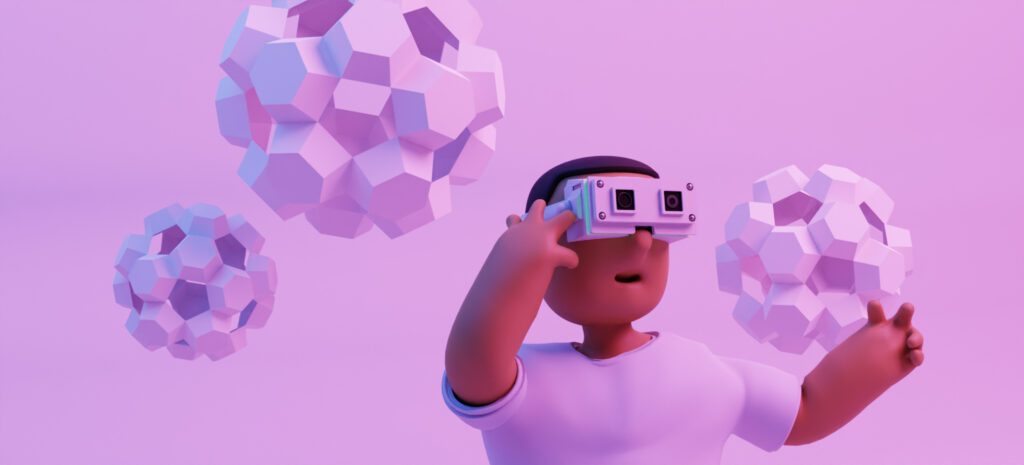A green wall is a vertical structure covered in plant life, also referred to as “living walls” or “vertical gardens”. The greenery is often planted in a growth medium […]
If you’ve never struggled with studying from a textbook, you’re one of the lucky ones. It often gets challenging to understand concepts that abstractly exist only on the page. This in turn makes it difficult to stay concentrated and interested, and it is easy to get distracted. The advent of technology brought with it even more distractions, as witnessed today when more people would rather spend hours on their smartphone instead of reading a book. And who can blame them?
On the other hand, technology also brings with it opportunities for creating new learning experiences that engage the learner and help people better grasp and retain material. Immersive learning design combines technologies like Artificial Intelligence, Virtual Reality, and Augmented Reality to create an engaging and meaningful learning experience – not just for the young minds, but for people of any age or profession!
With immersive learning, it’s possible to form highly personalized learning experiences, the importance of which we’ve talked about in our post about elearning in 2021. Basically, it allows students to learn at their own pace as well as choose the learning method which works best for them.
People generally remember 10% of what they read vs 30% of what they see vs 90% of what they do!
Immersive learning often stimulates several sensory organs at once, allowing for a meaningful interaction in a dynamic environment. By learning through experience, not merely reading or listening, learners are able to retain much more information. In turn, this makes them more motivated and focused. Let’s take a look at 5 immersive learning experience examples!
These videos are created using several wide-angle cameras which are then mapped together to form a spherical 360 degree view of the filmed surroundings. 360 degree photos and videos are an inexpensive yet innovative way of creating immersive learning experiences. Rather than simply monologue for the whole duration of class, teachers can utilize this technology to attain students attention during a lecture and create an interactive environment with engaged students.
Virtual Reality (VR) involves blocking out all physical surroundings and fully immersing users in an artificial (virtual) environment. Using digital simulations, VR devices are able to recreate real-world scenarios or even transport users to new worlds. Today, we use special headsets to experience virtual reality, and its use is most widespread in the gaming industry. The possibilities however are endless, and practically every industry can benefit from using VR learning.
Augmented Reality (AR) adds digital elements in a real-world space; the most popular example is the game Pokemon Go. In education, it can be very useful for analysis of multi-part objects where a digital label could be added in the AR interface – for example to distinguish car engine parts, or at an archeological site, etc.


Gamification is the implementation of game features and mechanics in non-game contexts. This strategy for creating a meaningful learning experience has become very popular in the latest EdTech products. People learn through multi-level challenges, instant feedback, competitions, and assigning points or even awards for completed tasks. By making the experience feel like a game and hence more fun, the learner is more motivated and engaged.
Let’s take language as an example. As much as one can know the grammar and vocabulary of a certain language, it’s a whole other thing trying to actually talk to someone in that language. Speech interfaces can bring enormous improvements to the way we learn languages online or through apps. In the absence of a human language partner, using speech recognition technology we are able to converse with digital language learning platforms, thus greatly improving retention and fluency. Additionally, implementing voice interactions in VR and AR devices can further enhance the immersive experience. The same is applicable to gesture recognition technology, which is a significant element for progress of human-computer interaction.
Haptic technology is designed to simulate the sense of touch using vibrations, motions, or forces on the user. Haptic devices can completely re-imagine how areas like chemistry, biology, or medicine are studied. For example, haptic technologies are used in some hospitals today for training students to examine virtual patients. Through various studies, it has been proved that adding a haptic component aids in retention and learning efficiency. As with speech interfaces, adding a haptic factor to VR devices would further increase environment immersion.
Educational technology has been booming the last decade, and there are no signs that the trend will stop any time soon. In fact, quite the opposite. It is estimated that by the end of 2021, 60% of U.S.-based higher education institutions will use VR to create an enhanced simulation and learning environment. These technologies create learning experiences that have the potential to revolutionize education everywhere in the world. Additionally, they are extremely relevant for training people in high-risk job fields such as medicine, oil, and gas industry, chemical industry, nuclear industry, and many more. The goal is to keep developing and refining immersive technologies while also making them accessible and cost-effective for institutions and individuals everywhere.